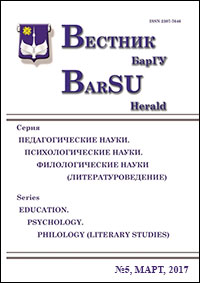PSEUDOMORPHIC INFERNALS OF UKRAINIAN AND GERMAN LITERATUREIN THE END OF 18TH — FIRST HALF OF THE 19TH CENTURIES
Keywords:
pseudomorphic personages; pseudomorphic infernals; fantasy; motive; folklore and literary demonologyAbstract
The article deals with the question of pseudomorphic personages as a specific phenomenon. We indicate that
a characteristic feature of pseudomorphic personages is the discrepancy of form and essence. Pseudomorphic infernals
have hellish, otherworldly essence, but they present themselves as people. They are especially popular in fiction. Аim
of the article is analysis the specifics of research of pseudomorphic infernals in Ukrainian and German literature’s
fantastic discourse in the end of the 18th — first half of the 19th centuries (works of J. W. Goethe, A. von Chamisso,
V. Hauff, G.-А. Burger, P. Beletsky-Nosenko, F. Kuprienko, G. Kvitka-Osnovyanenko). We define the genre range of
personages use. They function in folklore and literary fairy tales, ballads, gothic stories. Also we characterize
traditional motives, which associated with them: “dead groom or husband comes to his bride or his wife”, “a person
communicates with the devil, that looks like a man” and others. We conclude that pseudomorphic characters are very
popular in literatures of different nations and about the prospects of studying of this phenomenon in different contexts.
Ref.: 20 titles.
Downloads
Published
Issue
Section
License
Copyright (c) 2023 Вестник БарГУ Серия "Педагогические науки. Психологические науки. Филологические науки"
Это произведение доступно по лицензии Creative Commons «Attribution-NonCommercial» («Атрибуция — Некоммерческое использование») 4.0 Всемирная.
Авторы сохраняют за собой право заключать определенные договорные соглашения, касающиеся неисключительного распространения опубликованной версии работы (например, размещать ее в институциональном репозитории, публикация в книге) со ссылкой на ее первоначальную публикацию в этом журнале.





